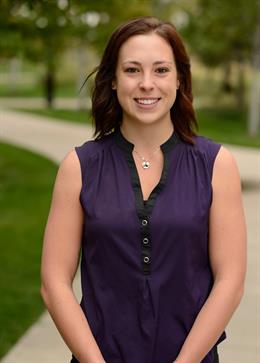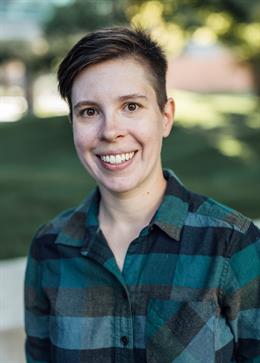2018 – 2019 RNA Scholars

Rachel Ancar
Project Title: RNA cleavage and processing in innate immunity
Program: Medical Scientist Training Program
Mentor: Jay Hesselberth
My research is focused on how the RNA helicase and viral sensor RIG-I responds to endogenous dsRNAs. RIG-I is required to respond to certain types of viral infection by initiating the production of type I interferon to combat infection. RIG-I must discriminate between viral and self-RNA to prevent inappropriate interferon production and the development of autoinflammatory and autoimmune disease. The goal of my research is to understand how RNA cleavage and degradation during cellular stress regulates RIG-I detection and activation by endogenous RNAs.

Danting Cao
Project Title: The role of an angiogenic miRNA, miR-126, in the pathogenesis of emphysema
Program: Pharmacology
Mentor: Irina Petrache
My overall research goal is to understand the role of an angiogenic miRNA, miR-126, in the pathogenesis of a common and incurable pulmonary disease called emphysema. My hypothesis is that cigarette smoking (CS)-induced decrease of miR-126 mediates lung endothelial cell apoptosis and inhibits endothelial cell repair. I propose to utilize liposomes as a delivery tool to study the therapeutic effects of miR-126 restoration during in vivo CS exposure. Functional outcomes of this study may provide basis for the development of a miRNA-based drug to prevent cell death and enhance endothelial repair caused by smoking.

Zoe O'Donoghue
Project Title: Characterization of RNA pseudoknot (PK) structures in the 3’ untranslated regions (UTRs) of flaviviral genomes
Program: Microbiology
Mentor: Jeff Kieft
My project focuses on RNA pseudoknot (PK) structures that are present in the 3’ untranslated regions (UTRs) of flaviviral genomes. These PKs are capable of halting viral RNA degradation by a host exonuclease, Xrn1, and this activity results in the formation of subgenomic flaviviral RNAs (sfRNAs) that are necessary for viral pathogenicity. I have worked to biochemically characterize these PKs from a variety of evolutionarily diverse flaviviruses and determined that the structures are not only resistant to degradation by multiple exonucleases, but that they also comprise more than one secondary structural class of PKs. Additionally, I have adapted a genetically tractable infectious clone system for Dengue wherein I can make specific mutations in the viral 3’UTR. I have created a cassette of mutant viruses to interrogate the relationship between the individual PK structures, the overall architecture of the viral 3’UTR, and the subsequent infection dynamics in both vertebrate host and mosquito vector systems.

Laura White
Project Title: RNA repair and translational regulation
Program: Molecular Biology
Mentor: Jay Hesselberth
In eukaryotes, a subset of tRNAs contain introns that are post-transcriptionally removed by a spliceosome-independent, enzyme-catalyzed pathway. Essential genes in this pathway include the members of a conserved endonuclease complex that excises tRNA introns, and an RNA ligase that rejoins the resulting tRNA halves. Beyond tRNA splicing, these enzymes also play additional intracellular roles. The tRNA ligase is required for the non-canonical splicing of an mRNA encoding a key signaling molecule in the unfolded protein response, and the tRNA splicing endonuclease has an additional essential function that has yet to be identified. I am investigating the RNA targets of this essential pathway to better understand how, when, and why cells initiate RNA cleavage and repair.

Katie Yergert
Project Title: Molecular mechanisms underlying mRNA localization to myelin sheaths
Program: Molecular Biology
Mentor: Bruce Appel
A major challenge in RNA biology is to understand how RNA regulatory mechanisms mediate cellular functions in vivo. One example of this challenge occurs in neurons by which mRNAs are transported across long distances in axons and translated at nerve terminals. Similarly, oligodendrocytes, the myelinating cell of the central nervous system, transport mRNAs across long distances to myelin sheaths. I am testing the hypothesis that neuronal activity promotes myelin sheath growth by regulating localization and translation of myelin transcripts in vivo. To accomplish this I am imaging the spatiotemporal dynamics of mRNA transport and local translation in living zebrafish.